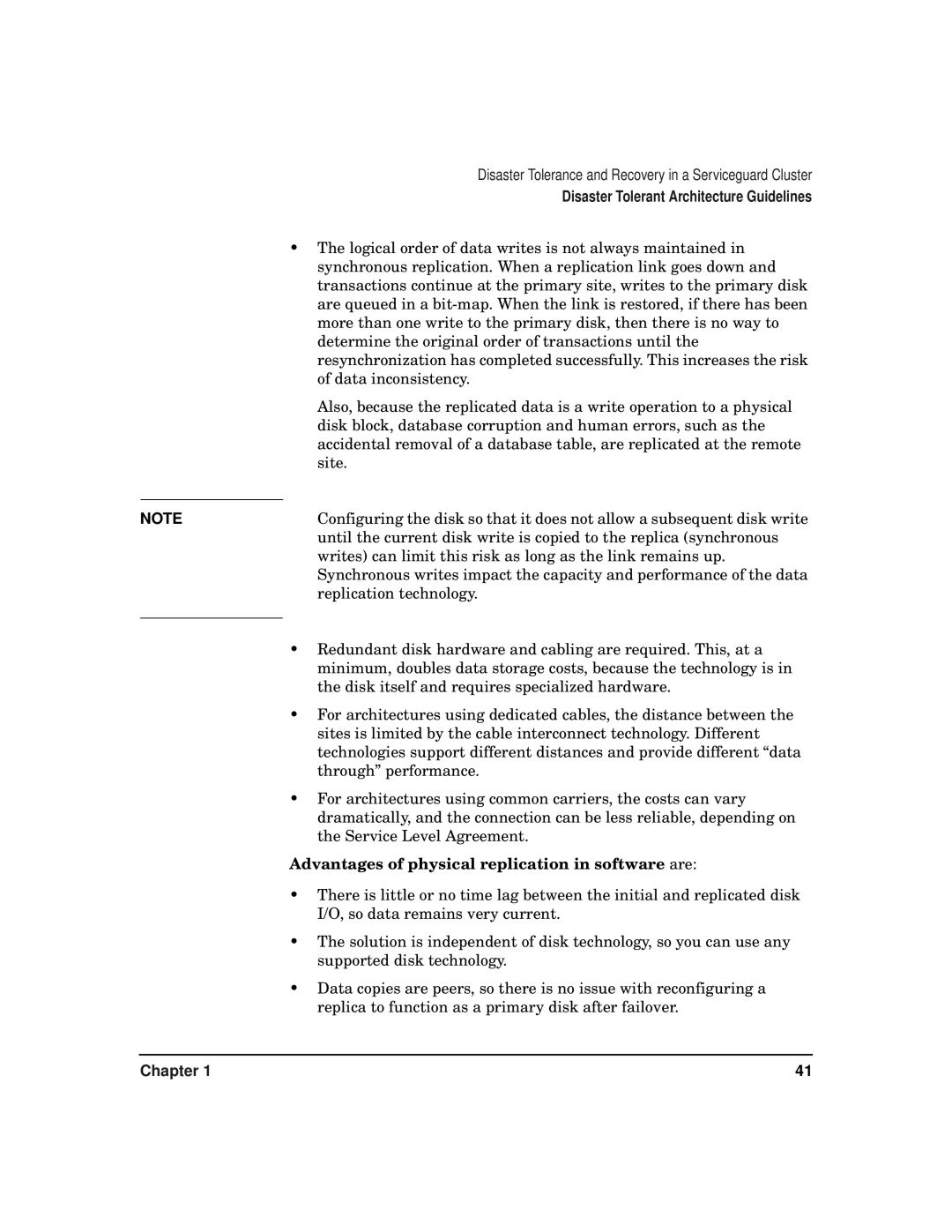
Disaster Tolerance and Recovery in a Serviceguard Cluster
Disaster Tolerant Architecture Guidelines
•The logical order of data writes is not always maintained in synchronous replication. When a replication link goes down and transactions continue at the primary site, writes to the primary disk are queued in a
Also, because the replicated data is a write operation to a physical disk block, database corruption and human errors, such as the accidental removal of a database table, are replicated at the remote site.
NOTE | Configuring the disk so that it does not allow a subsequent disk write |
| until the current disk write is copied to the replica (synchronous |
| writes) can limit this risk as long as the link remains up. |
| Synchronous writes impact the capacity and performance of the data |
| replication technology. |
|
|
•Redundant disk hardware and cabling are required. This, at a minimum, doubles data storage costs, because the technology is in the disk itself and requires specialized hardware.
•For architectures using dedicated cables, the distance between the sites is limited by the cable interconnect technology. Different technologies support different distances and provide different “data through” performance.
•For architectures using common carriers, the costs can vary dramatically, and the connection can be less reliable, depending on the Service Level Agreement.
Advantages of physical replication in software are:
•There is little or no time lag between the initial and replicated disk I/O, so data remains very current.
•The solution is independent of disk technology, so you can use any supported disk technology.
•Data copies are peers, so there is no issue with reconfiguring a replica to function as a primary disk after failover.
Chapter 1 | 41 |
